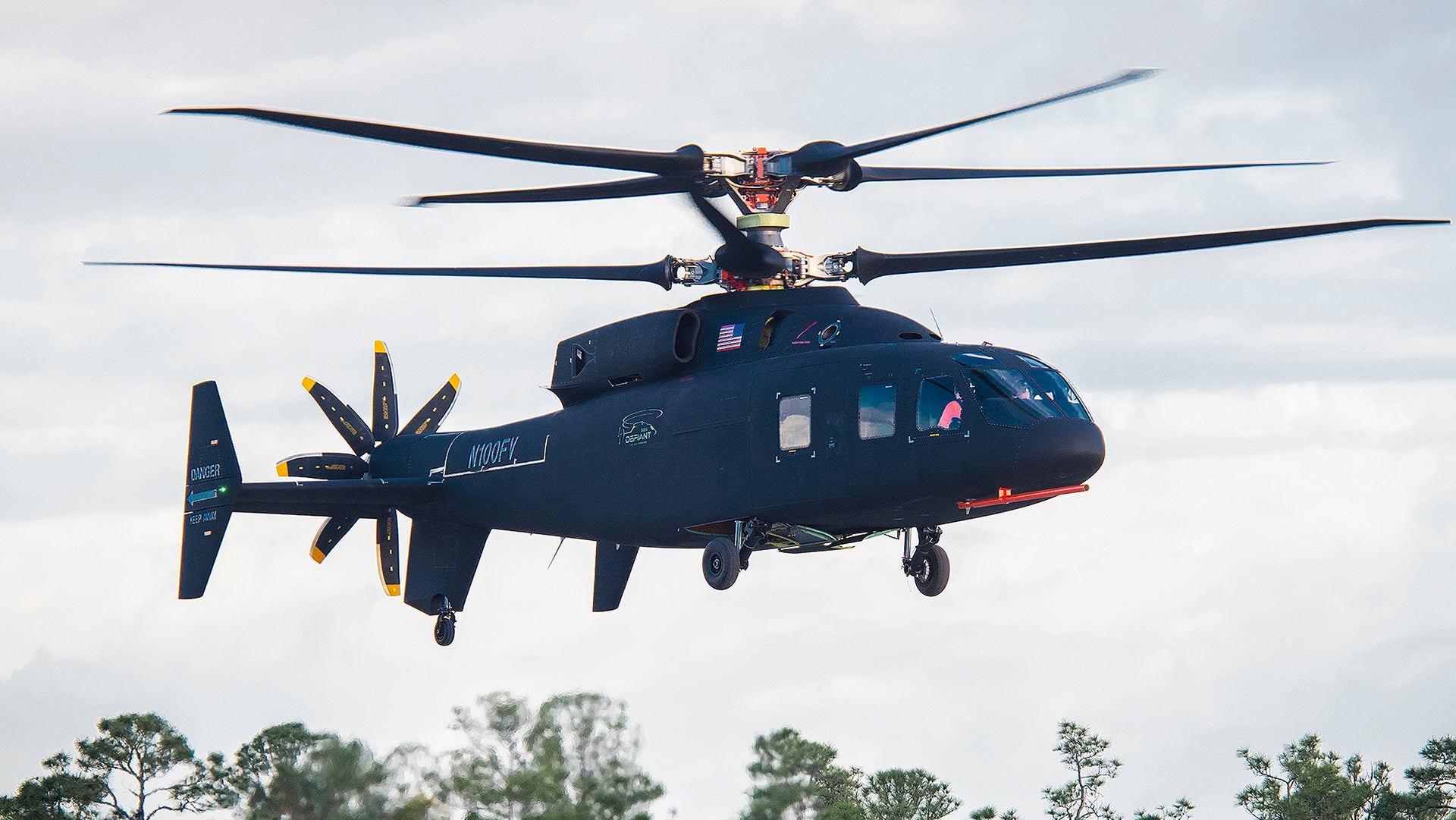The SB>1 Defiant has taken to the skies for the very first time. The coaxial rotor compound helicopter design took off from Sikorsky’s West Palm Beach facility at 7:47 AM today and flew for roughly half an hour, performing slow-speed handling tests. It did not engage its pusher propeller during the inaugural flight. The event is a triumph for the Sikorsky-Boeing team that hopes the SB>1 will eventually get put into production to fulfill portions of the Army’s Future Vertical Lift requirement and more.
The program had been hit by major technical delays, setting the SB>1’s first flight back by well over a year. Meanwhile, the Defiant’s major competitor, Bell’s V-280 Valor second generation tilt-rotor design that also aims to satisfy the Army’s Future Vertical Lift requirement, has been flying for 15 months and recently hit a whopping 280 knots in forward flight. You can read all about the V-280 Valor in this past feature of ours.
Dan Spoor, Vice President, Sikorsky Future Vertical Lift stated the following in a press release:
“Defiant is designed to fly at nearly twice the speed and has twice the range of conventional helicopters while retaining the very best, if not better low-speed and hover performance of conventional helicopters… This design provides for exceptional performance in the objective area, where potential enemy activity places a premium on maneuverability, survivability and flexibility. We are thrilled with the results of today’s flight and look forward to an exciting flight test program.”

Defiant is a further extrapolation of Sikorsky’s X2 technology demonstrator, which pioneered its unique configuration. The S-97 Raider, an armed reconnaissance coaxial rotor compound helicopter that the company also derived from the X2 concept and has helped further inform the development of the SB>1, has been flying for years now and two prototypes are currently in testing. Lockheed Martin has since purchased Sikorsky, but it continues to operate under that name and as a separate business unit.
The Defiant and the Valor are set to go head to head as part of the Army’s Joint Multi-Role (JMR) technology demonstration program. The service had hoped to begin these flight tests in December 2017, but pushed its timeline back due to the delays with the SB>1.
The Army plans to use the results from JMR to help better understand and define the Future Vertical Lift (FVL) program requirements. The SB>1 and V-280, or refined versions of these designs, will be heading for a brawl over the “medium” portion of that project, which aims to replace hundreds of UH-60 Black Hawks and AH-64 Apaches. The Sikorsky-Boeing team plans to pitch the Defiant as a successor to the Black Hawks and has shown a companion gunship design as the Apache replacement.

The Sikorsky-Boeing Team had previously hoped to have the helicopter flying in December 2018, but had to push the date back due to unknown issues with the drivetrain testbed. At that time, the first flight was already around a year behind schedule.
At the end of January 2019, Lockheed Martin, on behalf of Sikorsky, did release a video showing the Defiant conducting a ground run in the lead up to its first flight.

At present, the Army hopes to have its final Black Hawk replacement in service around 2030.
Now, with both the V-280 and the SB>1 flying, the competition for who will end up dominating the lucrative medium-lift helicopter category within the DoD in the decades to come will rapidly heat up. Other contenders exist, as well, and there may very well up being room for multiple types to satisfy the blanket requirement. But with mature tilt-rotor technology now being directly challenged, there is more on the line, including potential sales to the other services, exports to foreign militaries, and the potentially vast commercial and private market, as well.
In other words, a lot is riding on the rotors of these prototypes.
Contact the author: Tyler@thedrive.com
